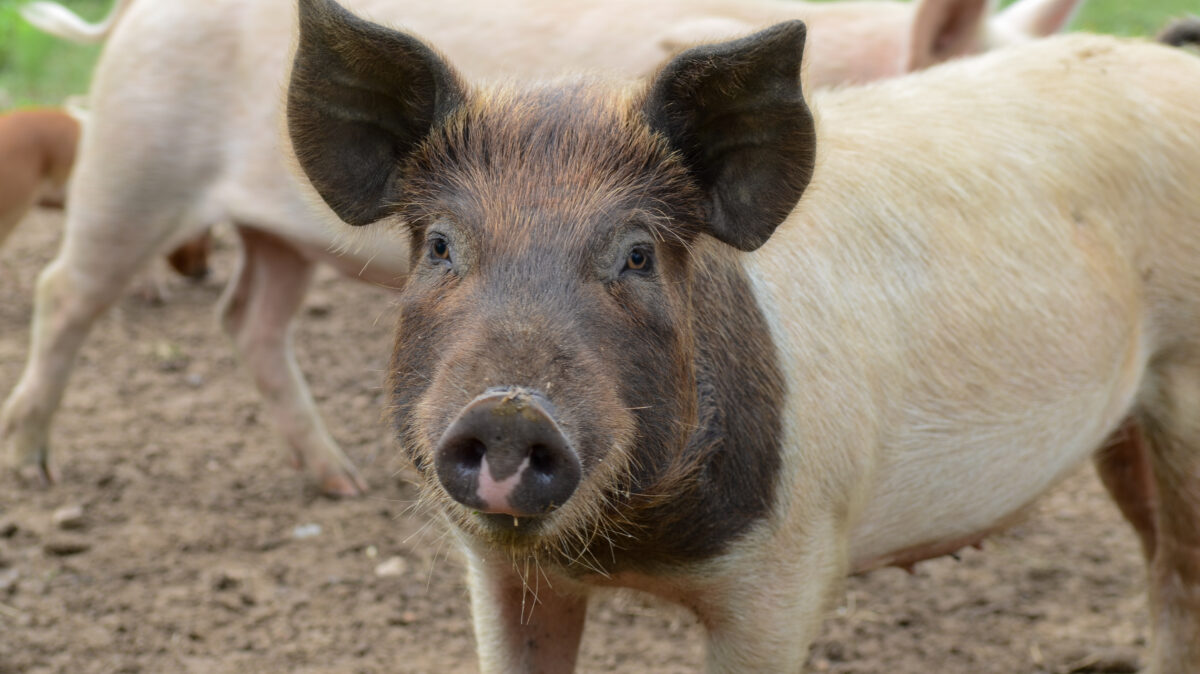Bullish Hogs and Pigs Report Surprises Analysts
TOPICS
USDAMichael Nepveux
Former AFBF Economist

photo credit: Alabama Farmers Federation, Used with Permission
Michael Nepveux
Former AFBF Economist
Last week, USDA’s National Agricultural Statistics Service released its latest Quarterly Hogs and Pigs report, providing a detailed inventory of breeding and marketing hogs as of March 1. Producers use this data to determine production and marketing strategies, while the industry uses it to assess the markets and the future supply of product. This bullish report surprised industry analysts, with swine numbers coming in below their expectations.
Hog and Pig Inventory
The report showed that on March 1, all hogs and pigs were down to 74.773 million head, a decline of 1.8% from the same time last year. This decline surprised analysts as it was the opposite of what the industry was predicting and fell completely outside of the range of forecasts. Analysts had been expecting on average an increase of 0.1%, with the estimates ranging from a 1.5% decline to a 1.3% increase. This decrease was the first year-over-year decline for March since 2014, when the industry was disrupted from PEDv. The number of market hogs also declined by 1.8%, with USDA reporting 68.558 million head. This decline was also a shock to analysts, with pre-report expectations coming in at a 0.2% increase, with a range from a 1.6% decline to a 1.6% increase.

When looking at market hogs by weight groups, every weight group experienced a year-over-year decline. Lighter market hogs fell by moderately smaller percentages than heaver animals; market hogs under 50 pounds fell by 1.3% to 21.288 million head, and market hogs in the 50-119-pound range fell by 1.2% to 19.118 million head. This contrasts with market hogs weighing 120-179 pounds falling by 2.5% to 14.705 million head and market hogs over 180 pounds falling by 2.5% to 13.446 million head. All weight categories fell below average analyst expectations and were mostly at the low end of the range, with the under 50-pound category and the 120-179-pound category coming in outside of the overall range of expectations, further underscoring the unexpectedness of this report. These overall lower-than-expected inventories indicate tighter inventories that will impact slaughter levels moving forward.
Breeding herd and pig crop
Prior to the report, analysts were expecting the March level of hogs kept for breeding to decline by 1.1%. This report revealed a greater decline of 2.5%, bringing the breeding herd down to 6.215 million head, at the very low end of analyst expectations, but just within range. Analysts had forecasted an average 0.5% increase in farrowings for December-February, but instead this report revealed a 0.9% decline to 3.041 million. The pigs per litter for this time frame was anticipated to increase, but instead experienced a slight decline, going from 11 pigs per litter in 2020 to 10.94 pigs per litter. This decline in the pigs per litter is the first decline for the December-to-February period since 2014. When combining the decline in the number of pigs per litter with the decrease in overall farrowings, the pig crop for December to February experienced a 1.4% decline to 33.270 million head. This is compared to a forecasted increase by analysts, but still within the range of expectations – at the low end.

Moving on to the rest of the year, farrowing intentions are expected to decline at a greater rate than analysts anticipated. Analysts had anticipated both the March-to-May intentions and June-to-August intentions to decline by 0.8%. Instead, the March-to-May number dropped 2.5%, to 3.07 million head, and the June-to-August number dropped 4.2%, to 3.124 million head. Both of these declines were outside of the range of expectations from analysts.
What does this mean moving forward?
Uncertainty is very much still in play. African Swine Fever is certainly a wildcard in export demand. Given the issues that China is still having with ASF, what does that imply about pork exports moving forward? The reality is that no one truly knows what is happening in China, despite anecdotal evidence and best guesses by analysts. Even if China is still interested in importing U.S. pork, can the industry overcome the current issues at ports and physically deliver the pork? Additionally, there are some questions on where U.S. prices are relative to our global competitors; our prices are closer to the prices of some of our competitors than previously and due to the tariff situation we would benefit from that discount. How about when we look at the domestic demand situation? It is very difficult to fully account for the impacts of COVID-19 and it will be very interesting to see how pent-up demand over the last year impacts the restaurant and institutional level as the country begins to recover. Ending stocks of pork in cold storage remain at very depressed levels that resulted from the disruptions in processing capacity last year, making any future impact in slaughter levels more critical under tighter stocks.
Conclusion
Last week’s Quarterly Hogs and Pigs bullish report surprised industry analysts with a decline in inventory numbers coming in below expectations. The report showed that on March 1, all hogs and pigs were down to 74.773 million head, a decline of 1.8% from this time last year. This decrease was the first year-over-year decline for March since 2014, when the industry was dealing with PEDv. The number of market hogs also declined by 1.8%, with USDA reporting 68.558 million head. USDA revealed a decline of 2.5% for hogs and pigs kept for breeding, bringing the breeding herd down to 6.215 million head, at the very low end of analyst expectations. Overall, this report is widely considered bullish for producers and signals an opportunity for the industry in terms of recovering from a very difficult 2020.
Top Issues
VIEW ALL